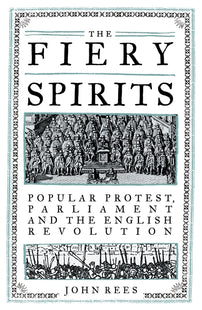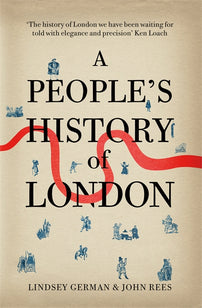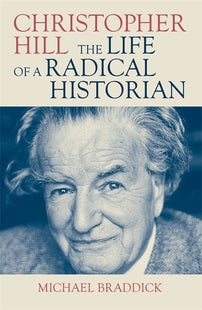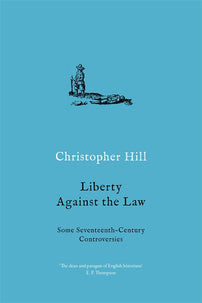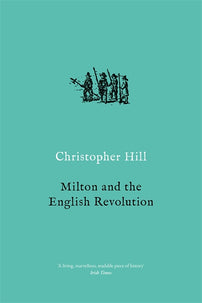The Waller Plot, Part III
In this third and final part of the series, John Rees, author of The Leveller Revolution and the recently published, The Fiery Spirits, concludes the story with exposure and execution.



Scenes 9 and 10: St. James and the King’s Army
When the rising happened, it was clearly intended that the King’s children should be taken into safe custody at St. James palace. Meanwhile, the plot did not depend on the forces raised in the City alone. They would also have some three-thousand cavalry sent by the King waiting 15 miles from London, whereupon the gates of the City, as the engraving shows, were to be opened to admit them to the capital. Waller and his associates had hoped to approach Liverpool MP Colonel John Moore, in charge of some of the troops guarding London, to engage him in this enterprise. But, perhaps wisely, they had not got around to approaching the future regicide.
When the plan was nearing execution, a coded phrase was to be sent to Oxford so that the military assistance could be organized. This message was “[t]he great Ship was come into the Downs” or, in a slightly variant form, “The East-India ship is in the Downs”. This message had already been sent to Oxford. The London plotters communicated with the Court via Lord Falkland, Waller’s old associate. Falkland replied they should ‘hasten with all speed’. White ribbons were to be worn as the conspirators’ sign of identification. In case the rebellion was unsuccessful, the royalists were to regroup at Blackheath and Hounslow Heath. A public declaration justifying the action had already been drawn up “to carry the better glosse and shew to the world”. It stressed resistance to new taxes and was to be distributed to plotters and “on the night of their rising to be set up on posts around about London.”
Waller’s plot was apparently a well-prepared secret. But, as it transpired, it was neither well-prepared nor secret enough. Lady Aubigny returned to London with the King’s Commission, which she subsequently delivered to Richard Challoner. Alexander Hampden joined her, a cousin of John Hampden, and a cousin by marriage to Waller. While Lady Aubigny carried the secret commission, Hampden carried the King’s latest message to Parliament. It bragged of the King’s army being recently resupplied and blamed hostilities on the King’s enemies. But Hampden also brought a private letter from the Earl of Dover to his wife, urging her to quit London with her children with all possible speed. This was enough to alert the parliamentarians to the possibility that some design on the capital might be in progress.
Suspicion grew when a second messenger from Oxford by the name of Hassel (or Hazell), a go-between with Lord Falkland, was heard speaking aloud about the plot, claiming that the capital would be set ablaze within ten days. Alexander Hampden had no sooner delivered the King’s declaration to the Lords on Whit Monday, 22 May, than he was arrested. Then, Parliament set a spy to catch a spy.
On 28 May, the Committee of Safety employed William Roe, Nathaniel Tompkins’ servant, after he had come to John Pym with reports of what he had already overheard of his master’s conspiracy. Roe did his work well. On the night of 30 May Waller returned to his house in Holborn in good spirits. Tompkins, whose own house stood nearby, joined him. Hiding behind a wall hanging, Roe heard Tompkins and Waller discussing the imminent action. Waller said, “By God, if we can bring to pass this business, we will have anything.” Roe hurried to report what he had heard and shortly after midnight, in the early hours of 31 May, Waller and Tompkins were arrested. A search of Tompkins’ house found the King’s commission hidden in the underground cellar.

Scene 11: The Covenant and Thanksgiving
The discovery of the plot created a political crisis. Special messangers summoned MPs from Fast Day services, recalling them to Westminster. Troops were deployed in the streets, houses of suspects were searched, arrests were made. Londoners crowded into the streets, fearful that a royalist attack was imminent. Pym and his allies exploited their foiling of the conspiracy to advance more radical measures. William Strode proposed a day of thanksgiving on the very day that MPs first debated the plot, although it was refused that day only to be ordered a few days later. Pulpits rang with denunciation of the plotters, as the engraving shows. Pym reported the outrage to the Lords. Waller’s plot concerned MP Peter Wentworth closely since “his ‘fiery spirits’ colleagues were its intended victims” and he was one of those appointed to report the plot to the City. Every church and chapel in the City and Westminster read the details of the conspiracy. Pamphlets and the weekly news sheets relayed the conspiracy and its discovery to their readers.
The House of Commons then passed a proposal long advocated by radicals in the City: a Vow and Covenant which denounced Waller’s Plot and pledged allegiance to the parliamentary cause. Those taking the Vow swore that they “will not consent to the laying down of arms so long as the Papists, now in open war against the parliament, shall by force of arms be protected from the justice thereof.” The oath-takers specifically agreed to defend “the true Protestant religion and the liberty of the subject against the forces raised by the king”. It was signed first by MPs, then the Lords, then circulated for all citizens to sign. The engraver pictures the Vow and Covenant being signed with a speech bubble from the mouth of the official taking the signatures which encourages those present to “joyne ourselves…in an everlasting Covenant which shall not be forgotten.”
The discovery of the plot, the Thanksgiving, the Vow and Covenant and the publicity surrounding it were blows to the Peace Party. The Oxford Treaty was already effectively dead, but the Waller Plot buried in once and for all. In Clarendon’s estimate, the plot’s discovery produced “a wonderful animosity to the king, and a covenant, and a union among themselves, and throughout the city a prejudice to all moderate men, who promoted an accommodation, and a brand upon all overtures of peace as stratagems upon the city, Parliament.”

Scene 12: The Execution
The severity of punishment for the conspirators followed the social gradient. Lady Aubigny fled to the French embassy but was captured, imprisoned for a year, and then released. Peter Wentworth informed the Lords that Portland and Conway were to be held for questioning, though only after D’Ewes and Pym made conciliatory proposals in the Commons. William Strode had warned the Peers that “there would be no sitting for them, if those Lords were restored to the freedome of their Votes againe.” Yet, despite Strode’s threat of dissolution for the Upper House, they were soon released, and no charges were levelled at them. Although there was considerable pressure from Henry Marten, William Strode and Oliver St. John, the Earl of Northumberland escaped censure. Clarendon recorded, “for though the violent party was heartily incensed against him, as a man weary of them, yet his reputation was still very great.”
Waller, in his capacity as an MP, was allowed to use all his poet’s eloquence to plead to the Commons. On 4 July he flattered fellow MPs, telling them that “if you look at my education it hath been almost from my childhood in this house, and among the best sort of men.” He insisted that he had never expressed “distrust or malice to the liberties of the people of the privileges of Parliament.” It was a speech of “incredible dissimulation”, according to Clarendon. Waller wrote to Henry Marten pleading with him that he should enjoy a ‘tryall att Common lawe’, but he was deprived of his seat, which meant that he was tried by a military tribunal headed by the Earl of Essex. Waller was condemned to death. By virtue of an extensive network of friends and allies, plus very considerable levels of bribery, Essex reprieved him. Essex extended his mercy to Nicholas Crisp’s accountant Thomas Blinkhorn. John Aubrey, the antiquary and author of Brief Lives, made the exaggerated claim that Waller had “bribed the whole House, which was the first time a House of Commons was ever bribed.” A more thoughtful contemporary thought “that Master Waller had been so free in his Confessions at the first, without which the Plot could not have been clearly detected; That Master Pym, and other of the Examiners, had ingaged their promise, to do whatever they could to preserve his life.” Waller was imprisoned for a year, fined £10,000, and allowed to go into exile in France. He eventually made his peace with Cromwell through the agency of his brother-in-law, Colonel Adrian Scroop, and returned to England under the Republic.
At the Restoration, Waller remained politically useful to Charles II, and is better known to history for his poetry than his plotting. Others had neither the political nor the economic resources of the Peers or of Waller. Hassell, the messenger between the plotters and Falkland, died in jail the night before his trial. Alexander Hampden, the courier who brought the King’s reply to the Lords, after a longer period of captivity, also died in prison. Tompkins and Challoner were convicted and sentenced to death. On Wednesday, 5 July, Tompkins was hanged outside his own home in Fetter Lane, Holborn; Challoner outside his house in Cornhill, near the Exchange. Tompkins was unrepentant on the gallows, telling the crowd “truly if I were to live, I should do the same thing, having no calling to the contrary.” Challoner, attended on the gallows by parliamentarian preacher Hugh Peters, still attempting to get Challoner to name fellow conspirators in the Lords, was more repentant, but the outcome was the same. “It was much wondered at”, recorded one observer, “and accordingly discoursed of by many at that time, what the reason should be, why Master Waller, being the principall Agent in that Conspiracy, (where Master Tomkins and Master Challoner, who had been drawne in by him, as their own Confessions, even at their deaths expressed, were both executed) did escape with life.”
A royalist broadsheet verse entitled ‘To the Citizens of London’ began its eulogy ‘Tis Tomkins (glad spectators) whom you see/Hang as a Trophy to your tyranny’. For radical parliamentarians Waller’s plot was remembered very differently. Looking back from the vantage point of 1647, Leveller William Walwyn described the problems he saw with the existing parliamentarian leadership:
The heads of this designe are the corrupt men in the House of Commons, even such as have been formerly of the enemies party abroad, and done him services here at home, by discovering our counsels, (as appeareth by the interception of some of their letters,) partaking with conspirators in the City (as in Wallers plot) opposing the raising of this Army, (by which the worke hath been so speedily ended) appearing crosse in all debates of the House for redresse of grievances, or relief of the oppressed and much abused people, constantly manifesting, That they have proposed other ends to themselves, then the common good of the Nation.
A year later the Levellers recorded their verdict on the conspiracy in the pamphlet England’s Troublers Troubled. It claims to be the work of a London craftsmen, but Clement Walker attributed it to Henry Marten. It certainly reproduces Marten’s known hostility to the plotters, describing the episode in these terms:
…when many of the Lords went with the King to help him to raise forces, and to be Commanders in his Armies, many of them also were left here, and sent back to corrupt the House of Commons, to devise plots and stifle discoveries (as that of Challenor and Tomkins) to pervert the City, to divide the people, to preserve traytors and delinquents from due punishment, as Waller and many others, to favour richmen and monopolizing companies, to crush mean men, impose burthens, and destroy the Parliaments Armies…
Aftermath
The verse beneath the engraved panels damned the plotters and praised their discovery in Biblical and apocalyptic terms. It instructed the cavaliers to stop their scheming:
Cease Cease Malignants doe not strayne,
Your witt, your strength, your selues in vayne.
The King’s men were merely those who “strive against the stream”, standing accused of selling the people’s rights:
Wherein you Basely gave away.
Theire Native Rights, their Lawes and Liberty
Subdued their Necks to th’ iron Yoke of Slavery.
But ultimately the malignants’ cause was doomed:
God and your Countrey shall defie
Your Name your Race, your Memory
Shall Rott and Stinke, your owne Posterity
The verse’s author’s optimism was not to be justified by the immediate course of the war. Within a few months Parliament would be grappling with resurgent royalism and more agitation for peace as the King’s armies won victory after victory in the ‘royalist summer’ of 1643. But what Waller’s plot revealed was an accurate biometric of the forces in play. Between the spectrum ends of militant royalism and the fiery spirits of the parliamentarian cause stood a middle ground that was rapidly becoming difficult to sustain.
John Hampden died of pistol shot wounds sustain in the battle of Chalgrove Field that June. In September Lord Falkland, despairing of peace and searching for death, rode alone through a gap in the hedges at the First Battle of Newbury and was immediately killed. The return of Queen Henrietta Maria to England strengthened Charles’ aversion to any peace that did not restore much of his old power. Under these circumstances, the policy of Henry Marten, William Strode, Alexander Rigby, Peter Wentworth and the other fiery spirits (seen in this episode either as targets of Waller’s plot or as some of those working most resolutely to defeat it) began to look like the only realistic policy.

